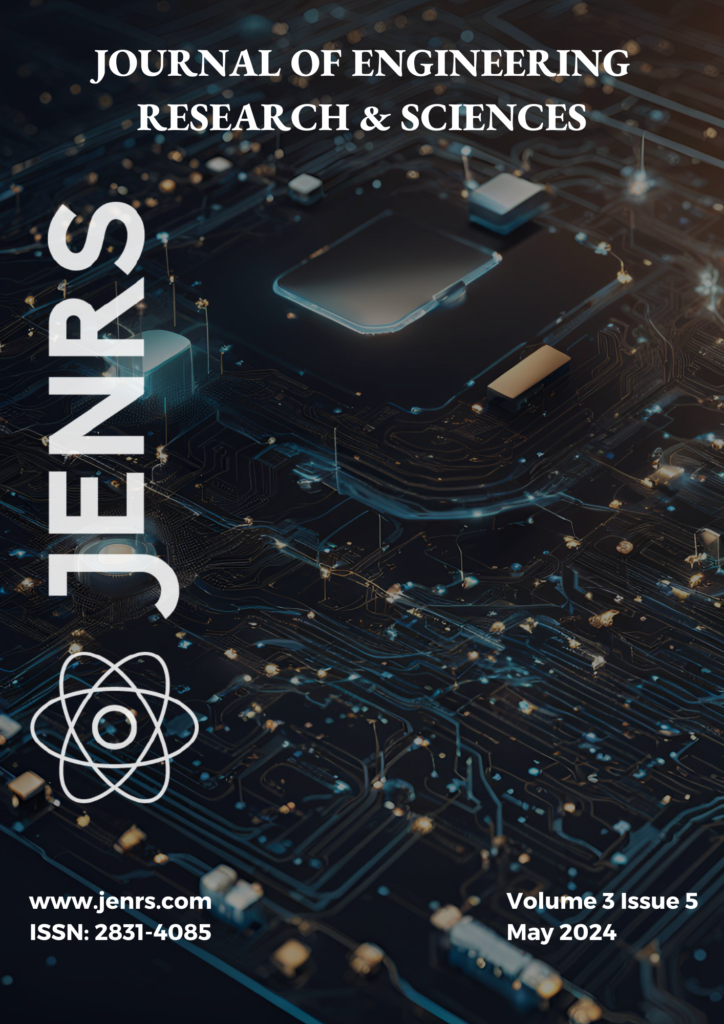
Volume 3, Issue 5
Download Complete Issue
This issue explores three significant research papers addressing key challenges in technology and global trade. The studies cover diverse topics: improving customs clearance processes, countering advanced phishing attacks, and advancing next-generation communication systems. The first paper introduces a mathematical model to enhance efficiency in customs procedures. The second study examines a novel phishing technique and proposes protective measures. The third paper investigates optical wireless communication technologies for future 5G and 6G systems. These works demonstrate the importance of interdisciplinary research in solving complex problems. By offering innovative solutions and practical applications, the featured studies contribute to the ongoing development of more efficient, secure, and connected global systems in an increasingly digital world.
Front Cover
Publication Month: May 2024, Page(s): i – i
Editorial Board
Publication Month: May 2024, Page(s): ii – ii
Editorial
Publication Month: May 2024, Page(s): iii – iv
Table of Contents
Publication Month: May 2024, Page(s): v – v
Mathematical Model of Optimum Management of the Customs Control Process and Expert System for Ensuring Data Reliability
Ilkhom Mukhtorov, Takhir Abduraxmonov, Abdusobir Saidov
J. Engg. Res. & Sci. 3(5), 1-13 (2024);
The article considers the issue of modeling the multi-step process of customs clearance of goods in foreign trade. A mathematical model of control of the process under consideration has been developed. A brief review of existing methods for solving the linear programming problem with variable coefficients of the target function is given. The essence of customs risks has been studied and a method for identifying customs risks of reliability using threshold matrixes has been proposed. An algorithm for controlling the reliability of the customs value of goods is developed and the results of the implementation of this algorithm are given
Browser-in-the-Browser (BitB) Attack: Case Study
Khalid Alissa, Bushra Alhetelah, Ghadeer Alazman , Asma Bader, Noor Alhomeed , Layan Almubarak , Fajer Almulla
J. Engg. Res. & Sci. 3(5), 14-22 (2024);
Phishing attacks are becoming more sophisticated daily, taking advantage of victims’ lack of awareness to steal sensitive information. The browser-in-the-browser (BitB) attack is a novel and sophisticated phishing technique that uses a single sign-on (SSO) popup window that mimics a legitimate browser login to steal a user’s credentials. In addition, an attacker can customize the URL shown in the header of the fake login popup to appear as a legitimate link with a padlock symbol. This attack is relatively dangerous as it steals sensitive information and is designed in a way that is hard to detect using HTML, CSS, JavaScript, and social engineering techniques. This paper aims to study and analyze BitB. Also, conduct an experiment on the BitB attack scenario from the attacker and victim’s points of view and recommend countermeasures to detect the attack. The results of BitB attack analysis and experiments show that BitB attacks require basic knowledge of phishing tools and programming languages to be implemented by attackers and achieve their goal of stealing sensitive information that allows them to move on to the next stage of their attacks. Further, this paper will be the first academic paper to study a new type of attack due to the lack of available research and documentation, making it a crucial contribution to the field.
Analyzing the Impact of Optical Wireless Communication Technologies on 5G/6G and IoT Solutions: Prospects, Developments, and Challenges
Ramsha Khalid, Muhammad Naqi Raza
J. Engg. Res. & Sci. 3(5), 23-36 (2024);
The imminent 5G and 6G communication systems are projected to exhibit substantial advancements in comparison to the current 4G communication system. Several critical and prevalent concerns pertaining to the service quality of 5G and 6G communication systems encompass elevated capacity, extensive connectivity, minimal latency, robust security measures, energy efficiency, superior quality of user experience, and dependable connectivity. Undoubtedly, 6G communication is expected to offer markedly improved performance across these domains compared to 5G communication. The integration of the Internet of Things (IoT) within the framework of the tactile internet is anticipated to be a fundamental component of advanced communication systems, encompassing both 5G and beyond (5GB), such as 5G and 6G. Consequently, 5GB wireless networks will encounter various challenges in accommodating diverse types of heterogeneous traffic and meeting the specified parameters related to service quality. Optical wireless communication (OWC), alongside various other wireless technologies, emerges as a promising candidate to fulfill the requisites of 5G communication systems. This comprehensive review articulates the efficacy of OWC technologies, including Visible Light Communication (VLC), Light Fidelity (LiFi), Optical Camera Communication (OCC), and Free Space Optics (FSO) Communication, as a viable solution for the successful deployment of 5G/6G and IoT systems.

